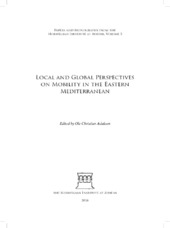| dc.contributor.author | Miller, Madelaine | |
| dc.date.accessioned | 2020-10-26T13:00:40Z | |
| dc.date.available | 2020-10-26T13:00:40Z | |
| dc.date.issued | 2016 | |
| dc.identifier.isbn | 978-960-85145-5-3 | |
| dc.identifier.issn | 2459-3230 | |
| dc.identifier.uri | https://hdl.handle.net/1956/24295 | |
| dc.description.abstract | The Late Bronze Age was a world of interaction in which people and things moved around, particularly in the Eastern Mediterranean basin. As people encountered one another, ideas, thoughts and values were occasionally exchanged followed by cultural changes and the creation of new material expressions. The Minoan harbour town of Khania serves as a good example of cultural encounters at the end of the Aegean Bronze Age. Its location on the northwest coast of Crete was favourable for seagoing travels. A number of objects discovered in the city bear witness to overseas connections with the mainland as well as with Egypt, Italy, Cyprus, and the Levant. | nob |
| dc.language.iso | eng | nob |
| dc.publisher | The Norwegian Institute at Athens | nob |
| dc.relation.ispartofseries | Papers and Monographs from the Norwegian Institute at Athens. volume 5 | nob |
| dc.title | Pottery as sign of cultural encounters: the case of Handmade Burnishes and Grey Ware in Khania | nob |
| dc.type | Chapter | nob |
